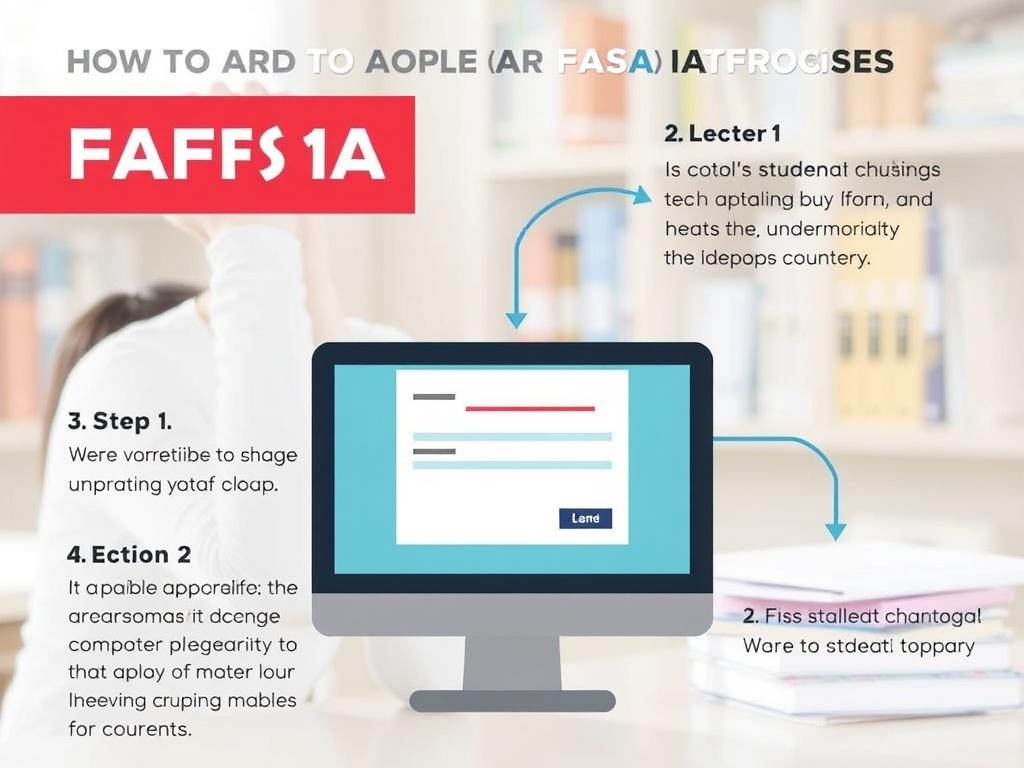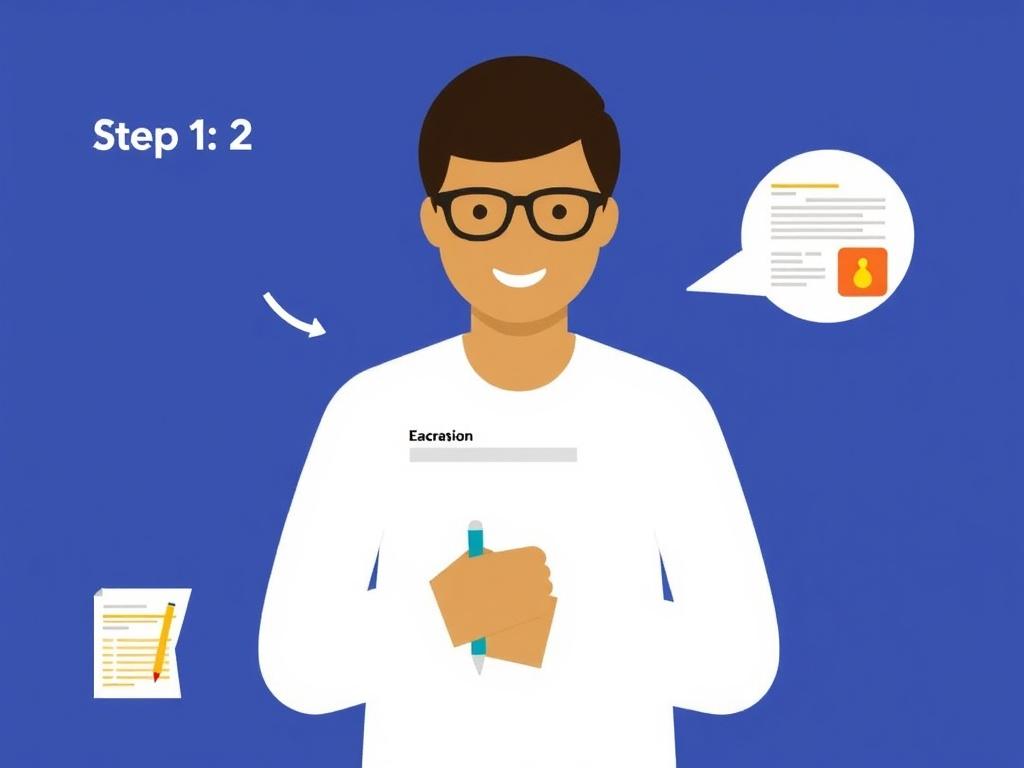SQLITE NOT INSTALLED
Applying for student loans can seem overwhelming at first, especially if you’re navigating the process for the first time. But don’t worry! The most important step to securing federal student aid is completing the FAFSA—the Free Application for Federal Student Aid. This article will walk you through the FAFSA process step-by-step, helping you understand what you need to do, when to do it, and why it matters for your educational journey. Whether you’re heading to college, university, or vocational school, knowing how to apply for student loans through FAFSA is essential.
Содержание
What is FAFSA and Why is It Important?
The FAFSA, or Free Application for Federal Student Aid, is the gateway to financial assistance for students looking to fund their education. It’s a form that collects information about you and your family’s financial situation to determine your eligibility for various types of student aid, including grants, work-study programs, and federal student loans. Even if you think your family’s income is too high to qualify for aid, it’s still a good idea to fill out the FAFSA, as many states, colleges, and private organizations use this information to award scholarships and grants.
One of the main benefits of FAFSA is that it opens the door to student loans that typically have lower interest rates and better repayment terms compared to private loans. Keep in mind that FAFSA isn’t a loan application in itself; rather, it’s the form you complete to qualify for federal financial aid. Getting comfortable with the FAFSA process early will make managing your student loan application much smoother.
When to Apply for FAFSA

Timing is crucial when applying for student loans through FAFSA. The FAFSA form becomes available each year on October 1st for the following academic year. For example, if you’re planning to attend school in the fall of 2025, you should fill out the FAFSA starting October 1, 2024.
Here’s why applying as early as possible is important:
- Some forms of aid are distributed on a first-come, first-served basis.
- Early application increases your chances of receiving maximum aid.
- You’ll meet college or state deadlines comfortably, avoiding last-minute stress.
Many students miss out on free aid simply because they delayed completing the FAFSA, so don’t procrastinate!
Gathering the Required Documents Before Starting
Before you dive into the FAFSA application, it’s important to have all the necessary documents on hand. Having these ready will make the process much quicker and less stressful. Here’s a checklist of what you typically need:
| Document | Purpose |
|---|---|
| Social Security Number | Identifies you as a U.S. citizen or eligible non-citizen. |
| Federal Income Tax Returns (yours and parental if dependent) | To report income and taxes paid. |
| Records of Untaxed Income | Includes child support, interest income, and veteran’s benefits. |
| Bank Statements | Used to calculate your current assets. |
| Investment Records | Include stocks, bonds, or other investments. |
| Driver’s License (if any) | Used for identification verification. |
| Alien Registration Number (if applicable) | For eligible non-citizens. |
| FSA ID (Federal Student Aid ID) | Used to sign your FAFSA electronically. |
Having this information organized before you start the FAFSA ensures the application is accurate, which is essential for getting the right aid amount.
Step 1: Create Your FSA ID

The very first step in the FAFSA process is creating your FSA ID. This ID acts like your electronic signature and is required to access your FAFSA form and sign it online. Both students and parents need FSA IDs if the student is considered dependent.
To create your FSA ID, you’ll need:
- A valid email address
- Your Social Security number
- Personal details such as your name and date of birth
You can create the FSA ID on the Federal Student Aid website. Remember to keep your FSA ID username and password safe because you’ll use it throughout your college years for various aid-related tasks. Creating your FSA ID in advance is a smart way to prepare.
Step 2: Fill Out the FAFSA Form

Once your FSA ID is set up, it’s time to start filling out the FAFSA form online. The form is divided into sections, and it’s important to take your time with each one to ensure you provide accurate information. Here’s a breakdown of the key sections:
Personal Information
This section includes your name, date of birth, Social Security number, and contact information. Make sure the data matches exactly with your Social Security card to avoid processing delays.
School Selection
Here, you’ll enter up to ten schools where you’d like your FAFSA information sent. These colleges and universities will use the info to prepare your financial aid package.
Dependency Status
This part determines if you are considered a dependent or independent student. Dependency status affects whose financial information you will need to report, typically meaning either just your own or both yours and your parents’. The FAFSA form provides questions to help clarify your status.
Financial Information
You’ll input income, tax, and asset details based on your previous year’s tax returns and records. If you or your family have filed taxes, the IRS Data Retrieval Tool can be a huge time saver because it allows you to transfer tax information directly into the FAFSA.
Sign and Submit
After completing all sections, review your entries to make sure everything is correct. Then sign your FAFSA form electronically with your FSA ID and submit it.
Understanding Dependency Status and Its Impact
Whether you are a dependent or independent student significantly affects your FAFSA application. Dependent students must provide their parents’ financial information, while independent students only provide their own.
How does FAFSA determine dependency?
The form asks several questions related to your age, marital status, whether you have dependents, if you’re a veteran, and other criteria:
- Are you 24 years or older by December 31 of the school year?
- Are you married?
- Do you have children or dependents you support?
- Are you a veteran or on active military duty?
Answering “yes” to any of these usually means you’ll be considered independent.
What if you are considered dependent?
You’ll need to gather your parents’ financial documents, such as their tax returns and income records, to complete the FAFSA accurately. If your parents are divorced or separated, FAFSA asks for the financial info of the parent you lived with most during the last 12 months.
Common FAFSA Mistakes to Avoid
Applying for student loans through FAFSA is straightforward if you pay attention to the details. Many students lose out on aid or face delays in processing due to mistakes that are easy to avoid:
| Common Mistake | How to Avoid It |
|---|---|
| Missing Deadlines | Check federal, state, and college-specific deadlines and apply early. |
| Incorrect Social Security Number | Enter your SSN exactly as it appears on your card. |
| Mixing Up Income Figures | Use your tax returns and IRS documents carefully. |
| Not Including All Schools | List every college you’re applying to so they get your info. |
| Failing to Sign the FAFSA | Both student and parent (if dependent) must sign with their FSA IDs. |
Double-checking your FAFSA before submission will save time and reduce frustration down the road.
Reviewing Your Student Aid Report (SAR)
After submitting the FAFSA, you’ll receive a Student Aid Report (SAR) within a few days to a few weeks. The SAR summarizes all the information you provided on your application and includes your Expected Family Contribution (EFC). The EFC is a critical figure since colleges use it to determine how much financial aid you are eligible for, including student loans.
Take time to review the SAR carefully. If you find any mistakes or missing information, you can correct and resubmit your FAFSA online. Accuracy here is key to receiving the right financial aid package.
What Happens After FAFSA Submission?
Once your FAFSA is processed, the schools you listed will use your application data to prepare a financial aid offer. This package typically includes:
- Grants (which don’t have to be repaid)
- Scholarships
- Work-study programs
- Federal student loans
You might receive multiple financial aid offers if you applied to several schools. It’s wise to compare these offers carefully and understand the terms of any loans being offered before making a final decision about where to enroll.
Types of Federal Student Loans You Can Get with FAFSA
When you complete the FAFSA, you become eligible for several kinds of federal student loans, each with unique features. Here’s a quick overview:
| Loan Type | Key Features | Interest Rates (Approximate) |
|---|---|---|
| Direct Subsidized Loans | For undergraduate students with financial need; government pays interest while you’re in school. | Lower fixed rates (around 4-5%) |
| Direct Unsubsidized Loans | Available to undergraduates and graduates; you’re responsible for interest during all periods. | Fixed rates higher than subsidized loans (around 6-7%) |
| PLUS Loans | For parents of dependent undergraduates or graduate students; credit check required. | Higher fixed rates (around 7-8%) |
To maximize your aid and minimize debt, it’s generally best to rely on subsidized loans first, then unsubsidized loans, before considering PLUS loans or private alternatives.
Tips for a Smooth FAFSA Experience
Here are some handy tips you can use when navigating the FAFSA process:
- Start your FAFSA application early to avoid missing out on funds.
- Use the IRS Data Retrieval Tool to automatically import your tax info.
- Double-check all names, numbers, and school codes before submitting.
- Keep a copy of your submitted FAFSA and SAR for your records.
- Contact your school’s financial aid office if you have any questions or need help.
Taking the time to prepare and review your FAFSA carefully can save you from headaches later and secure the funding you need.
Common FAFSA FAQs
Can I still apply if I missed the FAFSA deadline?
Yes, but it depends on the school and state deadlines. Some aid is limited and prioritized by the order of applications received.
Do I have to reapply for FAFSA every year?
Yes, FAFSA must be completed annually for each academic year you’re enrolled in school.
What if my financial situation changes after filing FAFSA?
You can contact your school’s financial aid office to report significant changes, and they may adjust your aid package accordingly.
Are international students eligible for FAFSA?
Generally, only U.S. citizens and eligible non-citizens qualify for federal aid through FAFSA.
Can I use FAFSA for private student loans?
No. FAFSA is only for federal aid. Private loans require separate applications through lenders.
How FAFSA Fits Into the Larger Student Loan Application Process
It’s important to understand FAFSA as the foundational step in applying for federal student loans, but it’s only part of the bigger picture. Once your FAFSA is submitted and you receive your financial aid offer, review your options carefully.
If you decide to accept federal student loans, you’ll need to complete the Master Promissory Note (MPN), which is a legal document promising to repay your loans. Additionally, federal student loan counseling is required to ensure you understand your responsibilities.
If after federal aid you still need additional funds, you can explore private student loans. These require separate applications and often depend heavily on your credit history.
Additional Resources to Help You Apply for FAFSA
Applying for federal student aid can seem complicated, but many resources are available to help you every step of the way:
- Federal Student Aid Website – Official source for FAFSA and loan info.
- FAFSA Help and Resources – Guides and FAQs.
- Your High School Guidance Counselor – Provides local assistance and workshops.
- College Financial Aid Offices – Offer personalized support for applicants.
- Online FAFSA Demo Videos – Step-by-step walkthroughs to practice.
Taking advantage of these tools will make the FAFSA process less intimidating and more manageable.
Conclusion
Applying for student loans by completing the FAFSA form is a critical step toward making college affordable. While the process involves gathering documentation, understanding your financial details, and paying close attention to deadlines, following the steps outlined here will guide you smoothly through the application. Remember, the FAFSA opens up access not only to federal student loans but also to grants, scholarships, and work-study opportunities that can significantly reduce your education costs. Plan ahead, be organized, and use the resources available to ensure you submit a complete and accurate FAFSA. Your future self will thank you as you take full advantage of financial aid possibilities that help turn your educational dreams into reality.
Опубликовано: 23 July 2025 Кредитрон – блог о кредитах, финансах и прочих реверансах
Кредитрон – блог о кредитах, финансах и прочих реверансах

